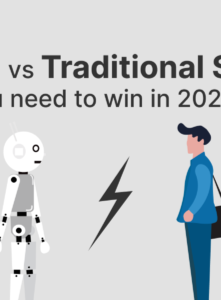Supercharge Your Traffic with SEO Content That Converts

Traffic without conversions is like filling a bucket full of holes—you’re getting site visitors, but they’re slipping away without taking action. To develop your enterprise, you need SEO content that drives conversions. With the right strategy, you could rank better on SERPs, entice the right target market, and rework those clicks into customers.
In this guide, we’ll break down a way to write SEO content that converts, enhance engagement with smart on-page search engine marketing, and music ROI from your efforts.
Table of Contents
- How to Identify Conversion-Driving Blog Topics
- Writing Optimized Content That Engages and Converts
- Internal Linking to Boost Time-On-Page and Conversions
- On-Page SEO Essentials for Conversion-Focused Blogs
- Repurposing Blog Content Into Lead Magnets or Newsletters
- Measuring ROI: Tracking Conversions from Blog Traffic
- FAQs
- Conclusion
How to Identify Conversion-Driving Blog Topics
Your blog topics determine who you attract. Instead of chasing vanity traffic, focus on keywords with buyer intent and topics that align with your services or products.
How to Find Conversion-Ready Topics:
- Use Google Search Console: Identify keywords already driving clicks and expand on them.
- Analyze Competitor Blogs: See what’s ranking and adapt it to your niche.
- Focus on Pain Points: Write blogs that directly solve customer problems.
👉 Related guide: Want More Clicks? Find Your Best Keywords with Google Search Console
Writing Optimized Content That Engages and Converts
Writing blog posts isn’t just about stuffing keywords—it’s about engaging, conversion-focused copy.
Key Tips for Conversion-Driven SEO Content:
- Start with a Hook: Your intro must capture attention immediately.
- Solve Problems Early: Deliver value upfront before pitching.
- Use Clear CTAs: Invite readers to book a consultation, download a guide, or explore services.
- Incorporate Power Words: Words like “boost,” “proven,” and “results” drive action.
📌 Related resource: How to Write Content That Gets Sales, Not Just Likes
Internal Linking to Boost Time-On-Page and Conversions
Internal links guide readers deeper into your site, increasing time-on-page and conversion opportunities.
Best Practices for Internal Linking:
- Link to service pages naturally (e.g., “Check out our Content Marketing Services“).
- Use keyword-rich anchor text.
- Include at least 3–4 internal links per blog.
On-Page SEO Essentials for Conversion-Focused Blogs
Optimizing your blog ensures it ranks well and attracts qualified leads.
Key On-Page SEO Practices:
- Keyword Placement: Use your target keyword in headings, intro, and naturally throughout.
- Meta Optimization: Write enticing meta titles/descriptions to boost click-through rates.
- Mobile Optimization: Ensure your blog is fast and mobile-friendly.
- Schema Markup: Implement structured data for better search visibility.
👉 Related read: The Ultimate On-Page SEO Checklist for 2025
Repurposing Blog Content Into Lead Magnets or Newsletters
Your blog content can become more than just a post—it can fuel your email campaigns and lead magnets.
- Turn Guides into PDFs: Offer downloadable checklists or templates.
- Repurpose Posts for Newsletters: Summarize blogs into digestible email tips.
- Use for Social Media Content: Break blogs into bite-sized posts for LinkedIn or Instagram.
This strategy not only extends your content reach but also grows your email list for retargeting.
Measuring ROI: Tracking Conversions from Blog Traffic
If you’re not measuring results, you’re guessing. Track performance using tools like Google Analytics and HubSpot.
Key Metrics to Watch:
- Conversion Rate: % of blog readers taking desired actions.
- Bounce Rate: Lower bounce rates signal better engagement.
- Lead Attribution: Track which blogs drive the most leads.
- ROI: Compare revenue generated versus content investment.
FAQs
Q1: How often should I publish SEO blogs?
Consistency is key. Aim for 2–4 posts per month targeting high-intent keywords.
Q2: How do blogs convert readers into customers?
Blogs build trust, educate prospects, and guide them to service or product pages via internal links and CTAs.
Q3: Should every blog have a CTA?
Yes! Every blog should end with a clear, conversion-oriented CTA (e.g., booking, download, or contact).
Q4: How long should SEO blogs be?
For best results, blogs should be 1,200–1,500 words with in-depth, valuable insights.
Q5: Can old blogs be updated to improve conversions?
Absolutely! Refreshing old posts with new stats, internal links, and CTAs can boost performance.
Conclusion: Drive Conversions with SEO Content That Works
Creating SEO content that converts isn’t just about traffic—it’s about turning readers into buyers. By targeting high-intent topics, writing optimized posts, using internal links, and tracking ROI, you can supercharge both your traffic and conversions.
Start building conversion-driven blogs today and amplify your content ROI with our Content Marketing Services and On-Page SEO Service Agency.
We help brands grow to their fullest potential. Don’t miss out on your chance to stay up to date with latest trends.


